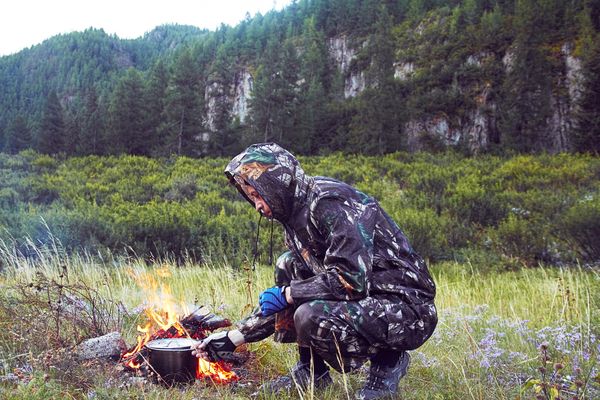3.5.2
Pages 234-246: Key Themes
Key Themes in Pages 234-246: To the Bridge over the Canal
Key Themes in Pages 234-246: To the Bridge over the Canal
The sensations of terror and panic during the attack are focalised through Robbie.


Robbie's survival instinct
Robbie's survival instinct
- Throughout, we see Robbie's survival instinct (“His business was to survive…”) but afterwards we see him experience “the paralysis of shock”.


Everyday vs war images
Everyday vs war images
- The narrative juxtaposes images from everyday life in the village of the civilians who “lived in parallel” with the war (e.g. the farmer, the woman knitting and the man teaching his son to kick a ball) with the scenes of carnage following the Stuka attack and the advance to the canal. The juxtaposition helps to make the almost instant destruction even more shocking.


Ruin at the canal
Ruin at the canal
- When Robbie, Mace and Nettle reach the canal bridge there is ruin everywhere: “All the way in now, not a farmhouse or barn was left standing” (p242).
- Ominously, they are still seven miles from Dunkirk.
1Introduction to Atonement
1.1Introduction & Background to Atonement
1.2Focus of Your Exam: Crime Texts
2Chapter Summaries & Analysis: Part One
2.6Chapter 6
2.10Chapter 10
2.11Chapter 11
2.12Chapter 12
2.13Chapter 13
2.14Chapter 14
3Chapter Summaries & Analysis: Part Two
3.1Pages 191-201: To the Farmhouse
3.2Pages 202-213: The Night in the Barn
3.3Pages 214-226: The Attack
3.4Pages 226-234: Robbie's Reflections
3.5Pages 234-246: To the Bridge over the Canal
3.6Pages 246-254: Arrival at Dunkirk
3.7Pages 254-265: To the Cellar
4Chapter Summaries & Analysis: Part Three
4.1Pages 269-277: London, 1940
4.2Pages 277-286: Briony as Writer
4.3Pages 287-315: Victims of War
4.4Pages 315-327: Lola & Paul Marshall’s Wedding
4.5Pages 328-349: The Visit
5Chapter Summaries & Analysis: Part Four
5.1Epilogue: London, 1999 - Pages 353-371
6Key Character Profiles
6.1Briony Tallis
6.2Robbie Turner
6.3Cecilia Tallis
6.5Paul Marshall
6.6Emily Tallis
7Key Themes
7.1Introduction to Crime Texts
7.2Crimes in Atonement
7.3Criminals in Atonement
7.4Victims in Atonement
7.5Detection in Atonement
7.6Settings in Atonement
7.7Guilt & Punishment in Atonement
8Writing Techniques
9Context
9.1Historical Context
9.2Social Context
9.3Literary Context
10Critical Debates
10.1Marxist Literary Criticism
Jump to other topics
1Introduction to Atonement
1.1Introduction & Background to Atonement
1.2Focus of Your Exam: Crime Texts
2Chapter Summaries & Analysis: Part One
2.6Chapter 6
2.10Chapter 10
2.11Chapter 11
2.12Chapter 12
2.13Chapter 13
2.14Chapter 14
3Chapter Summaries & Analysis: Part Two
3.1Pages 191-201: To the Farmhouse
3.2Pages 202-213: The Night in the Barn
3.3Pages 214-226: The Attack
3.4Pages 226-234: Robbie's Reflections
3.5Pages 234-246: To the Bridge over the Canal
3.6Pages 246-254: Arrival at Dunkirk
3.7Pages 254-265: To the Cellar
4Chapter Summaries & Analysis: Part Three
4.1Pages 269-277: London, 1940
4.2Pages 277-286: Briony as Writer
4.3Pages 287-315: Victims of War
4.4Pages 315-327: Lola & Paul Marshall’s Wedding
4.5Pages 328-349: The Visit
5Chapter Summaries & Analysis: Part Four
5.1Epilogue: London, 1999 - Pages 353-371
6Key Character Profiles
6.1Briony Tallis
6.2Robbie Turner
6.3Cecilia Tallis
6.5Paul Marshall
6.6Emily Tallis
7Key Themes
7.1Introduction to Crime Texts
7.2Crimes in Atonement
7.3Criminals in Atonement
7.4Victims in Atonement
7.5Detection in Atonement
7.6Settings in Atonement
7.7Guilt & Punishment in Atonement
8Writing Techniques
9Context
9.1Historical Context
9.2Social Context
9.3Literary Context
10Critical Debates
10.1Marxist Literary Criticism
Unlock your full potential with Seneca Premium
Unlimited access to 10,000+ open-ended exam questions
Mini-mock exams based on your study history
Unlock 800+ premium courses & e-books